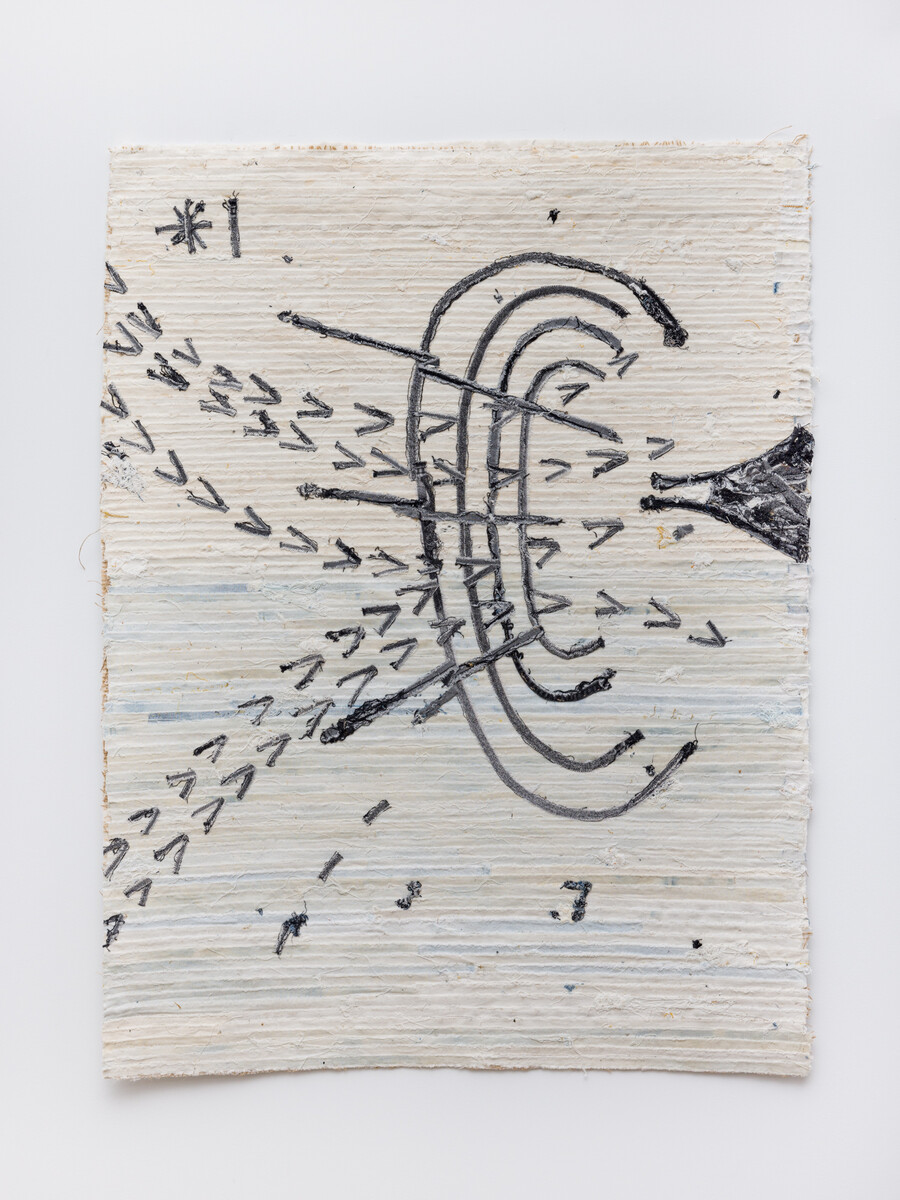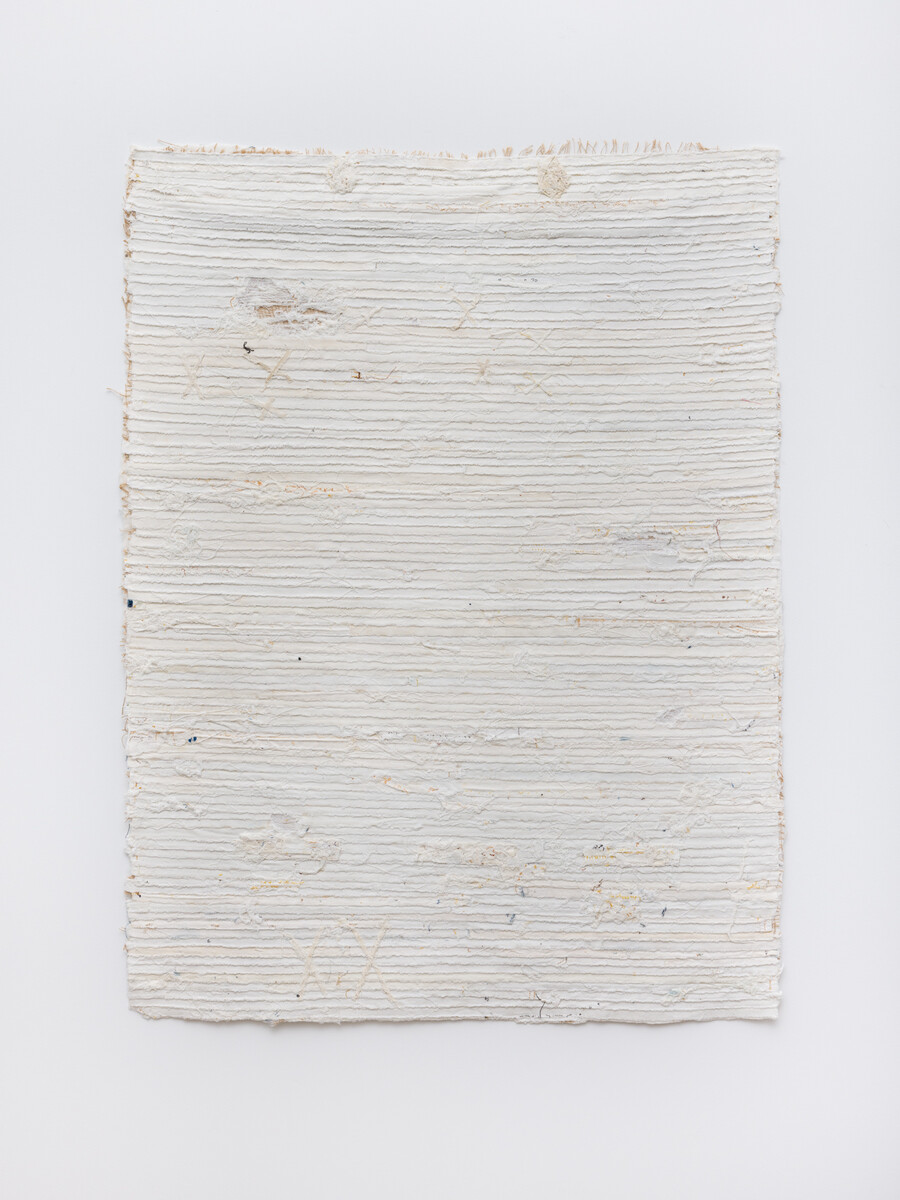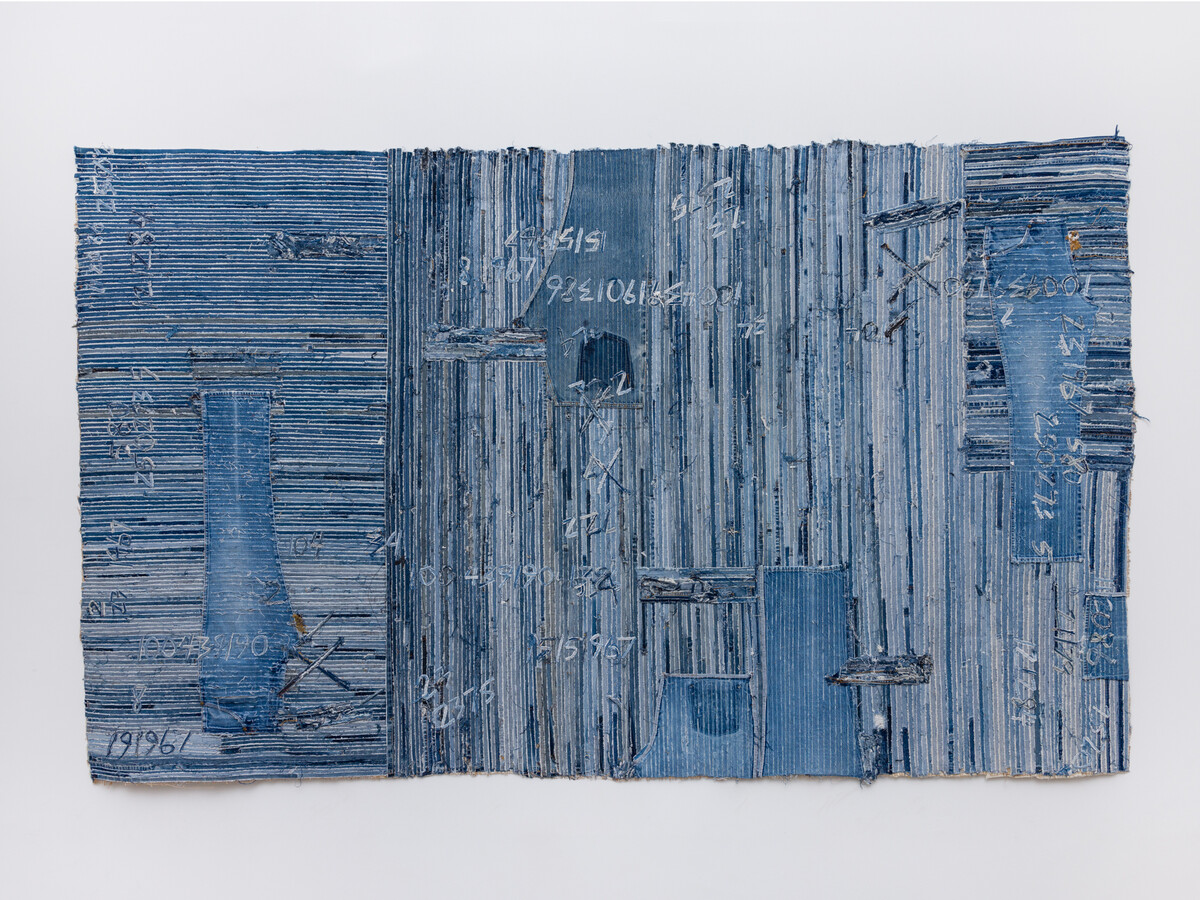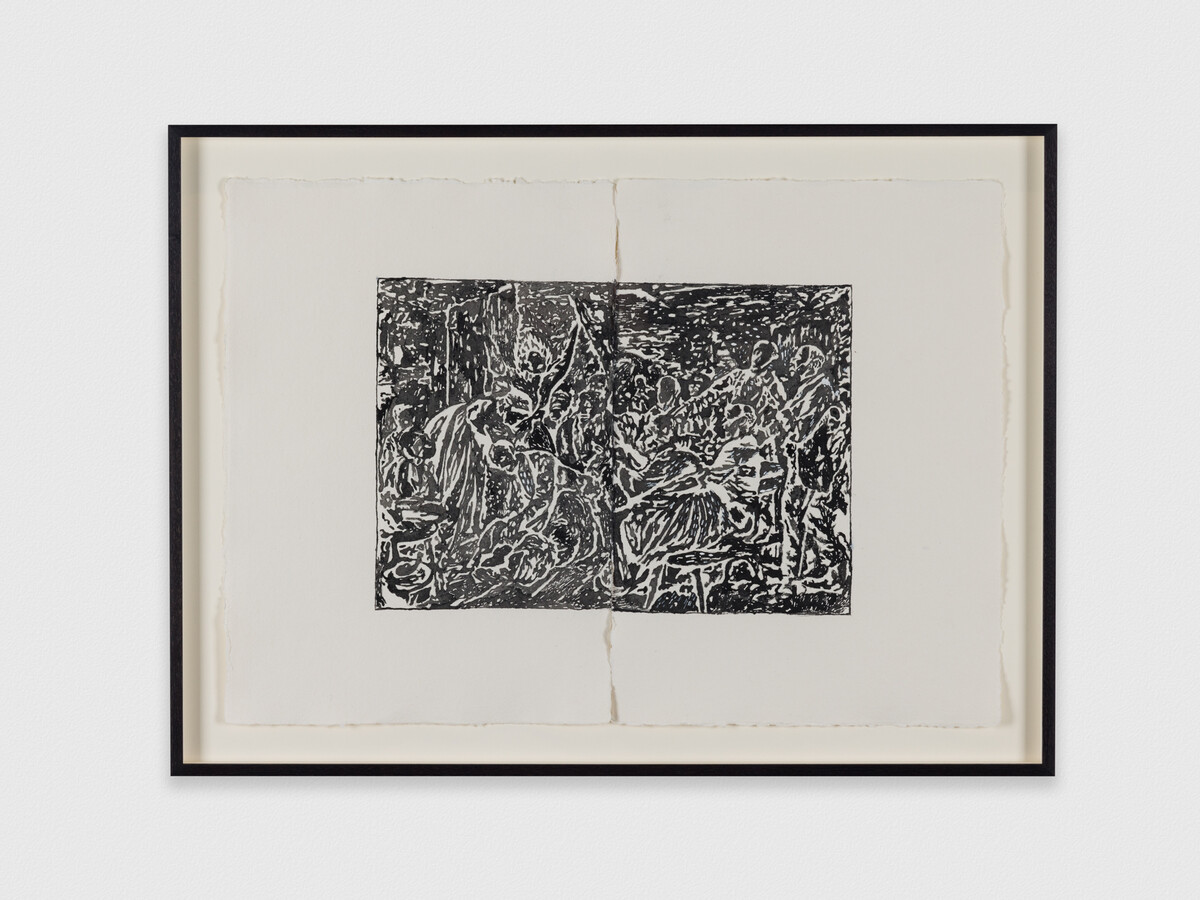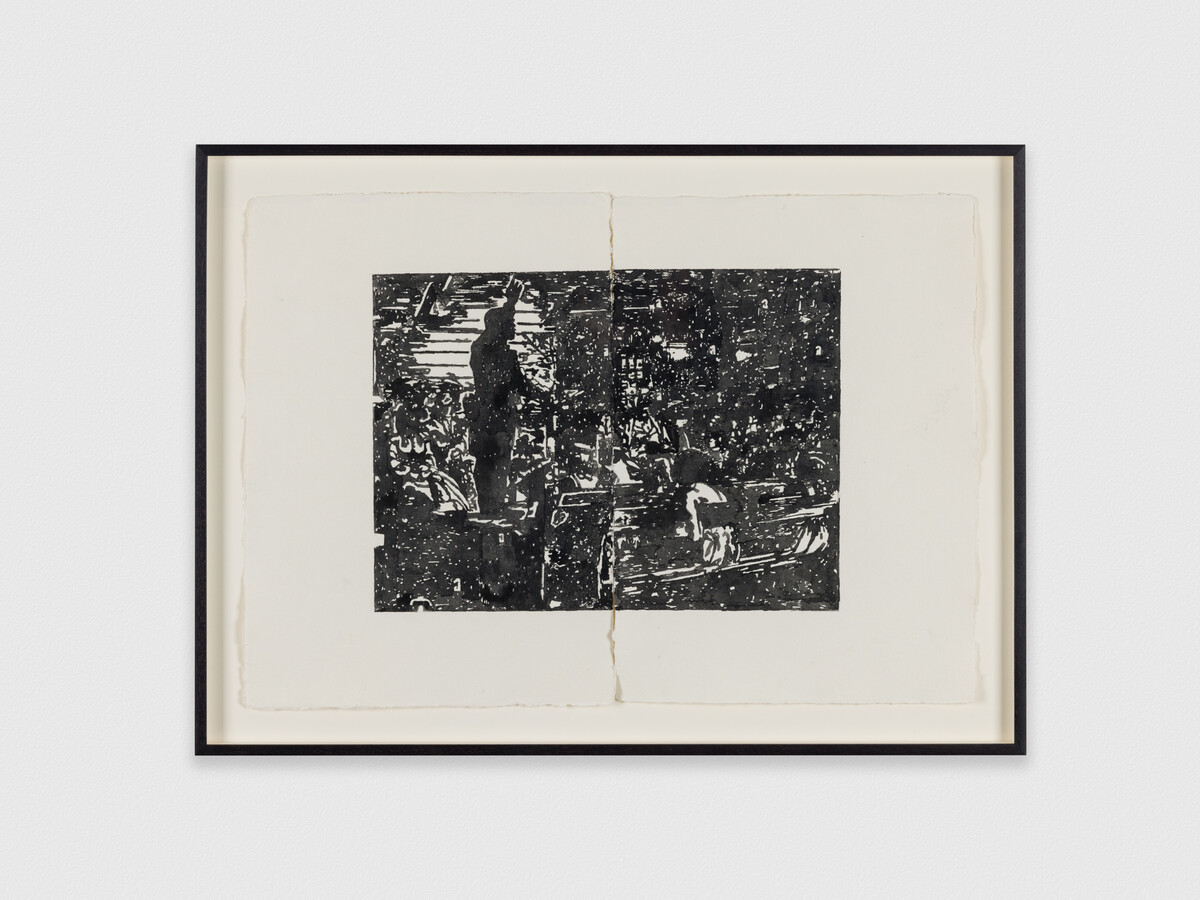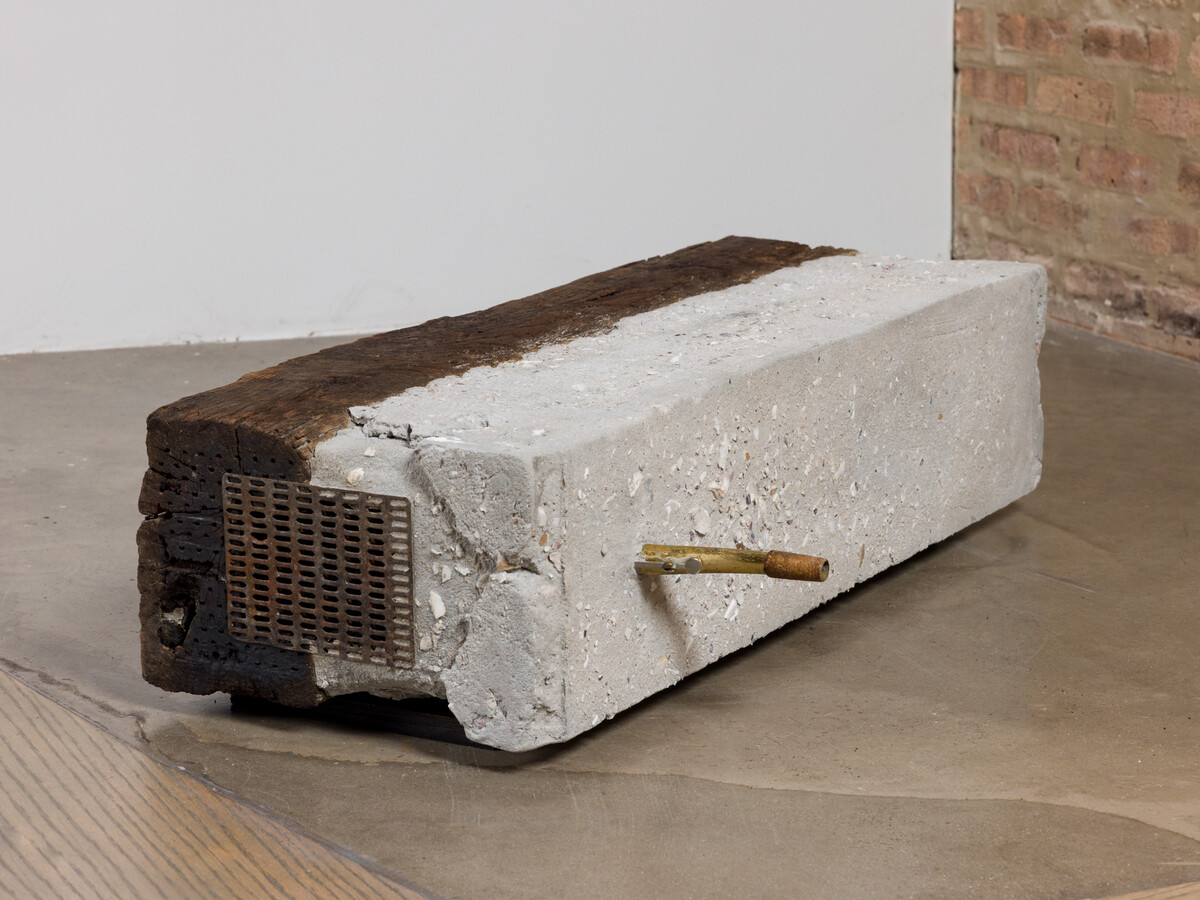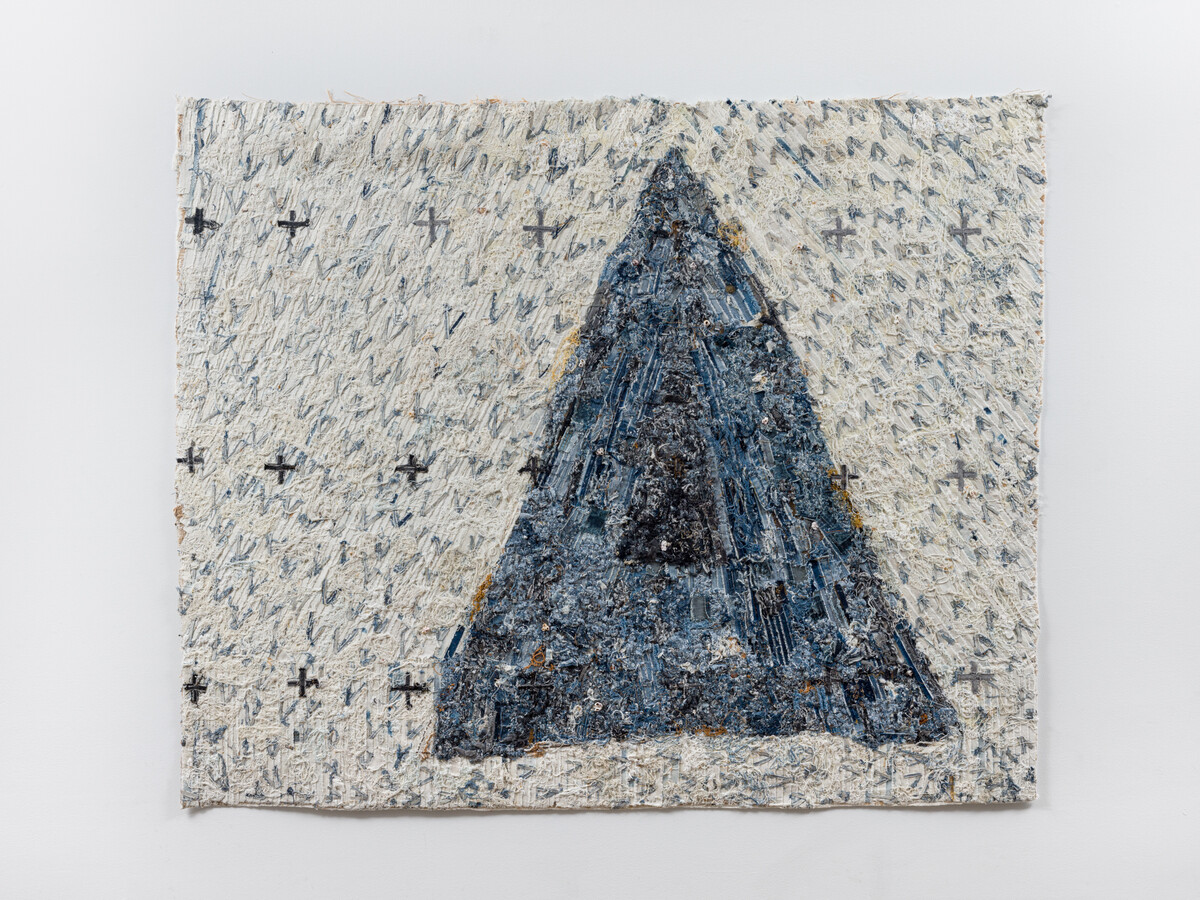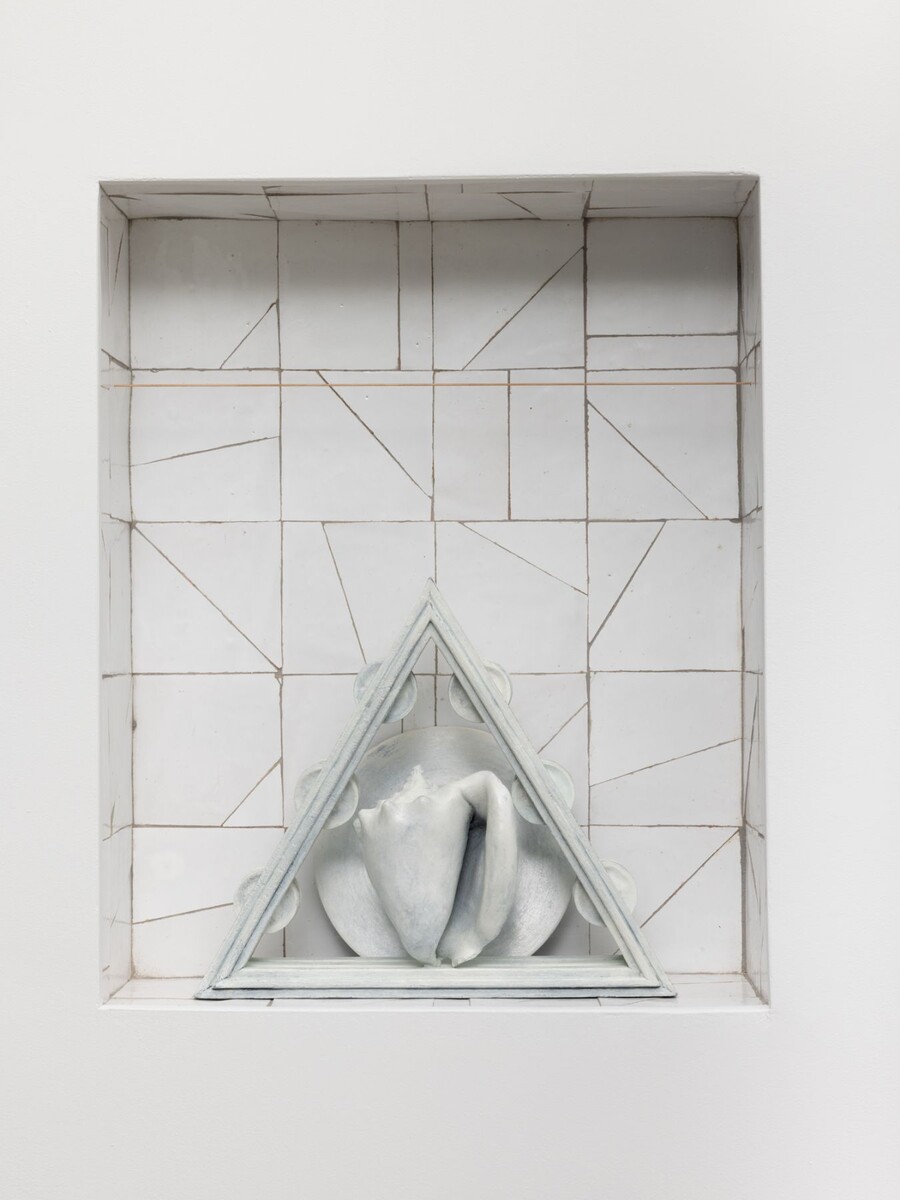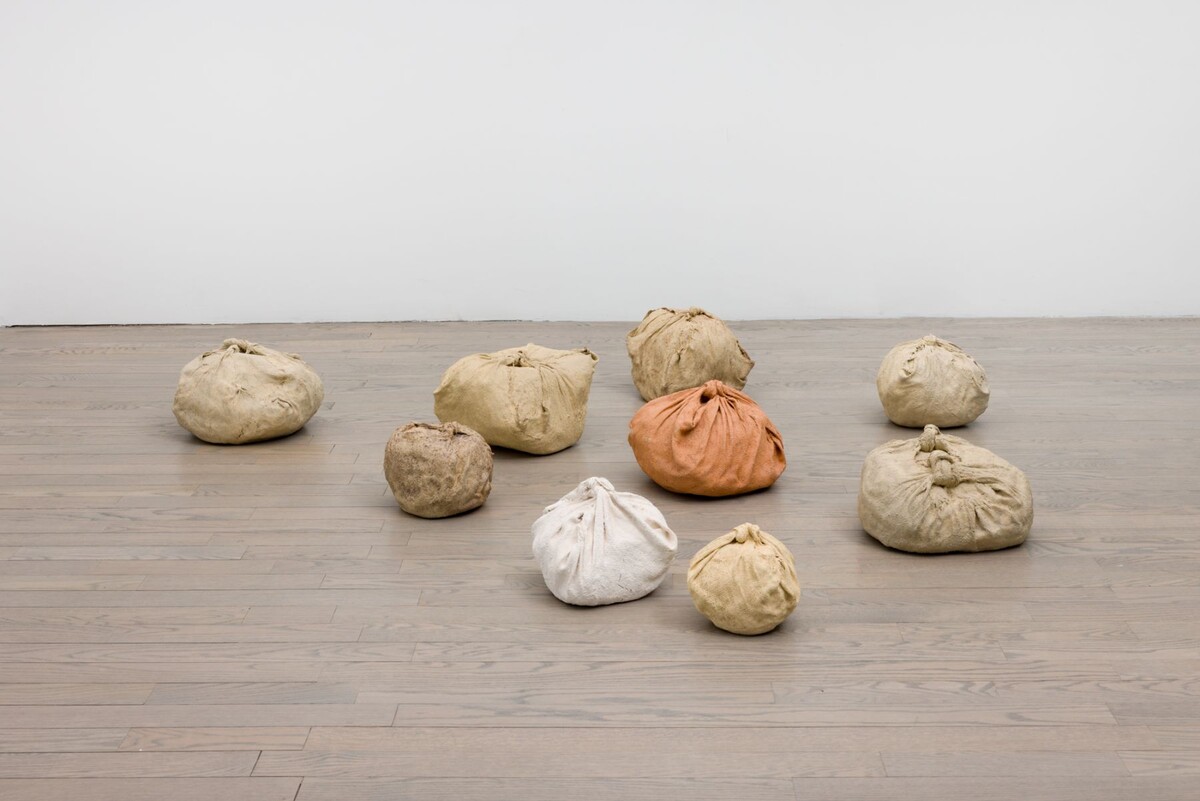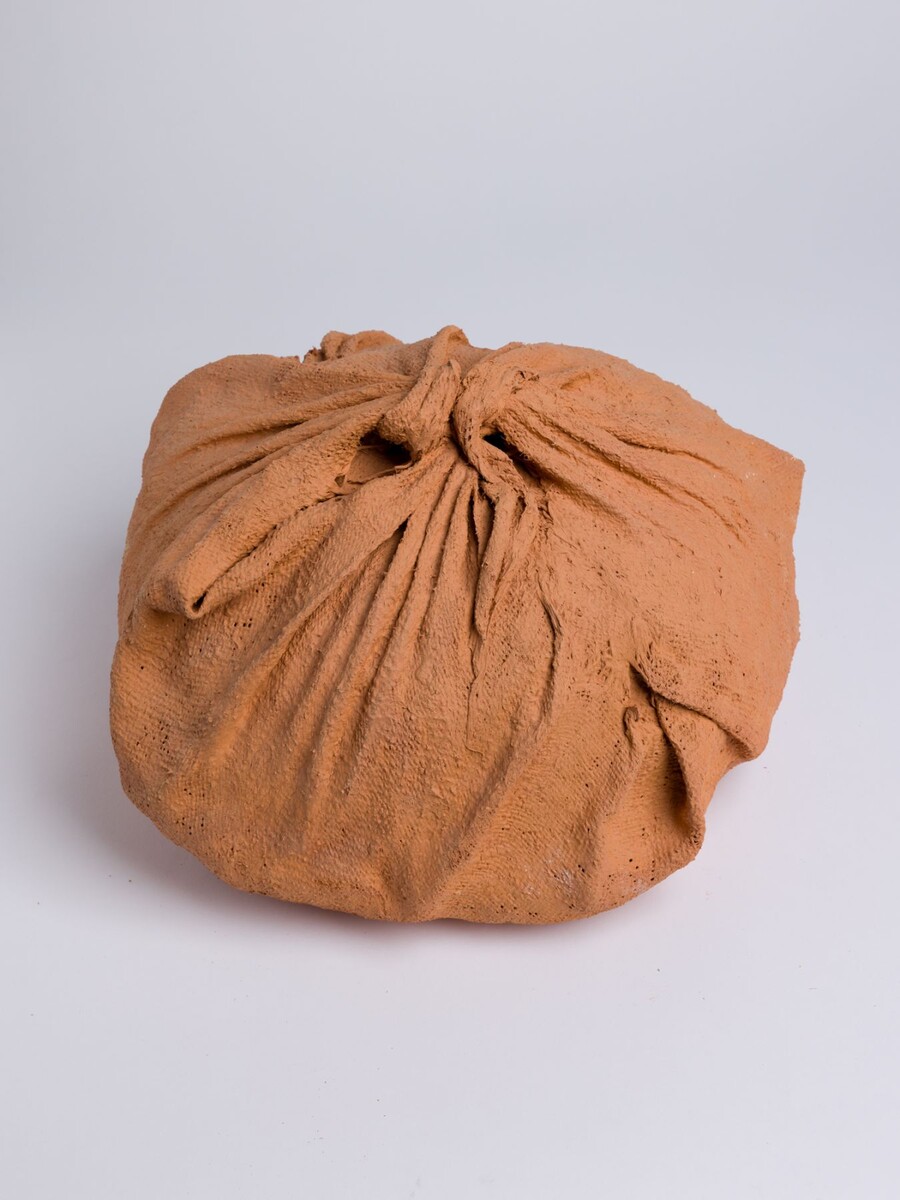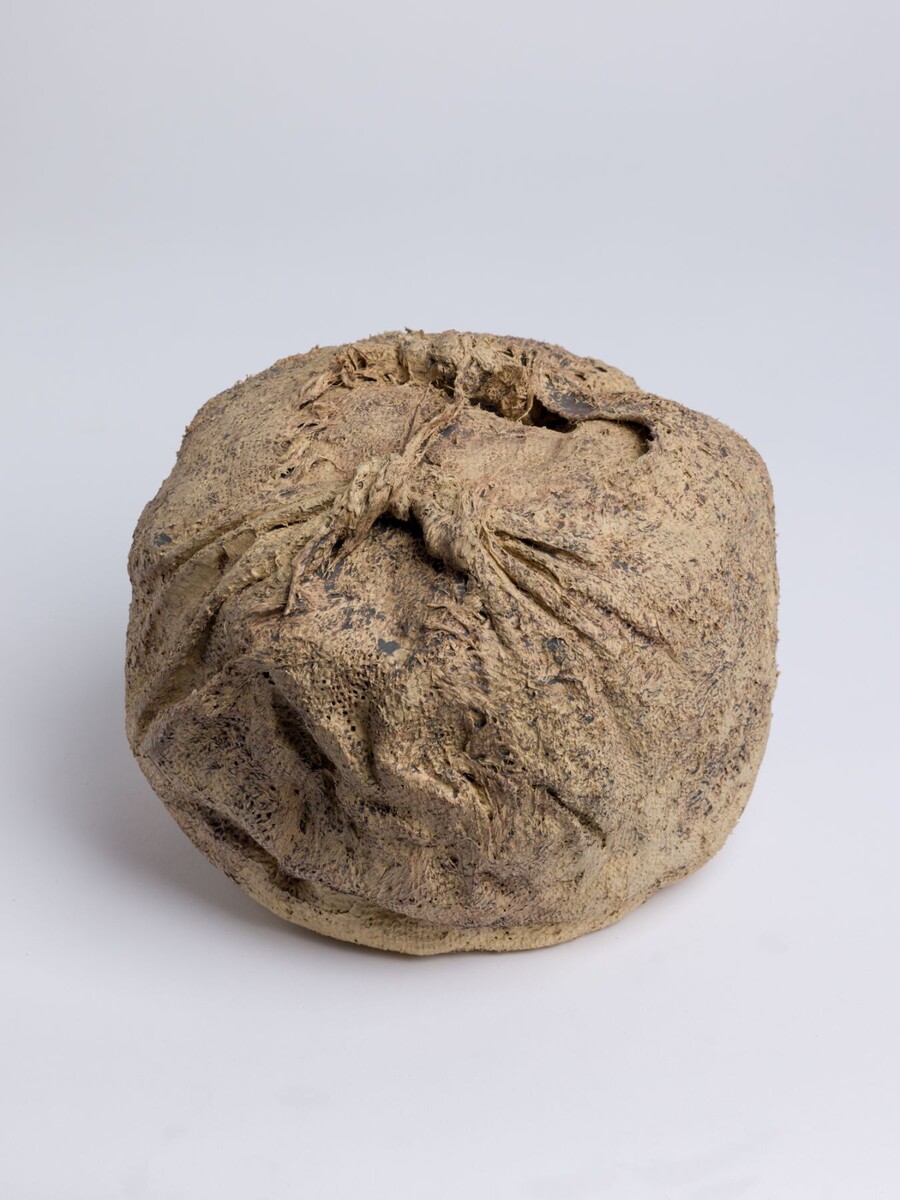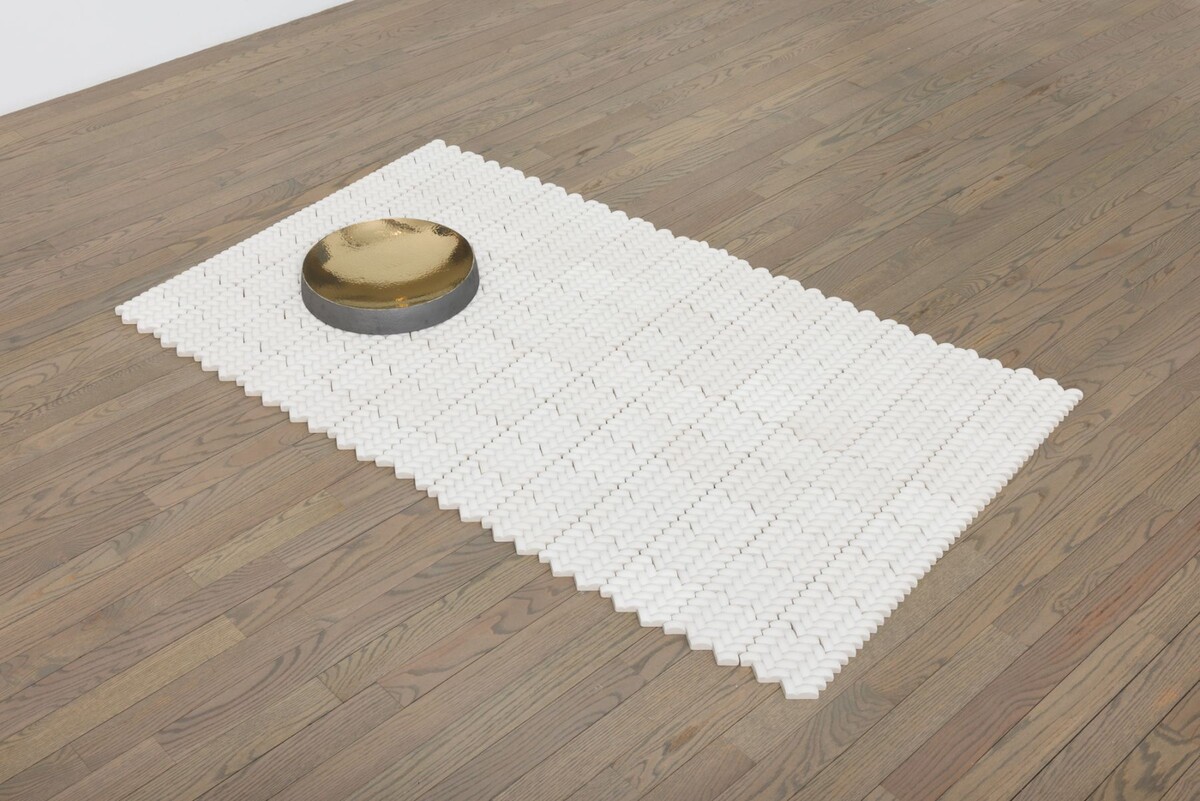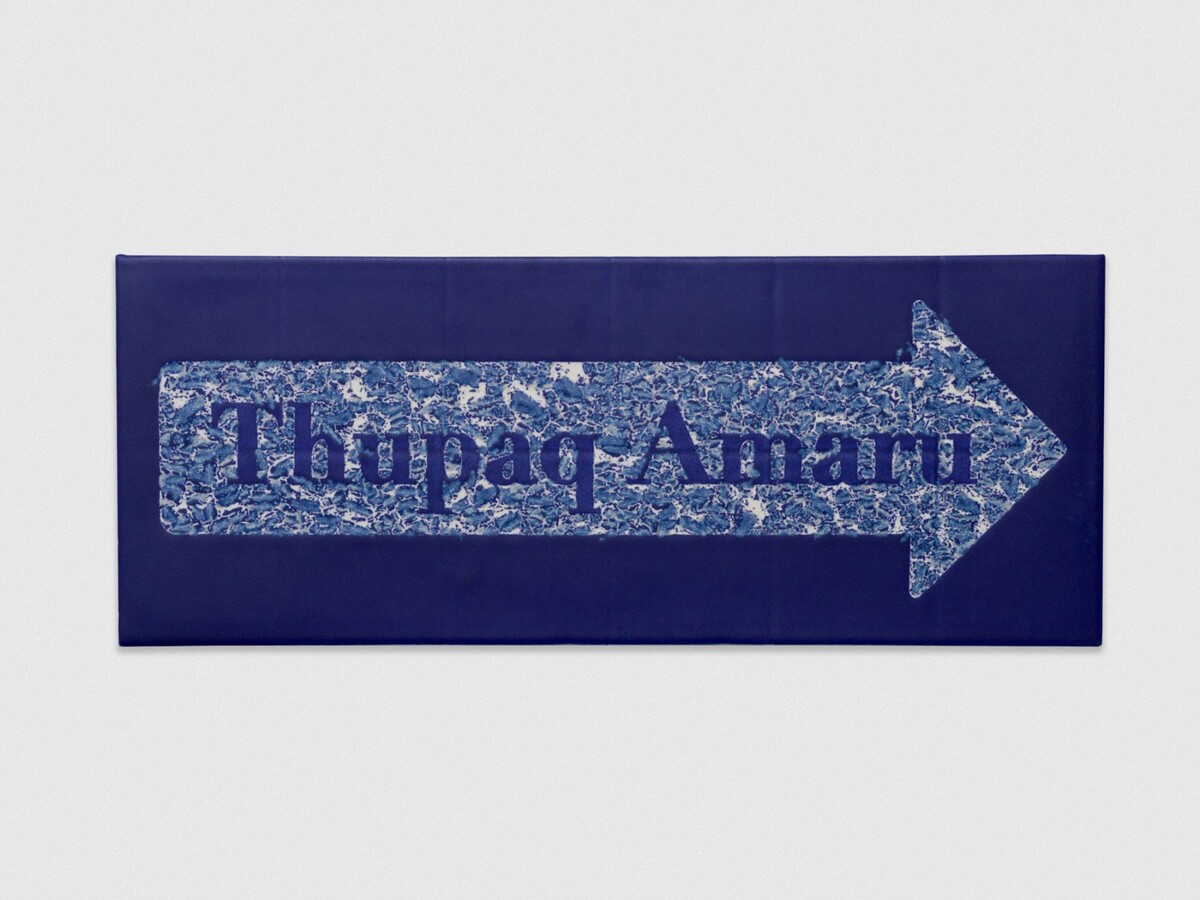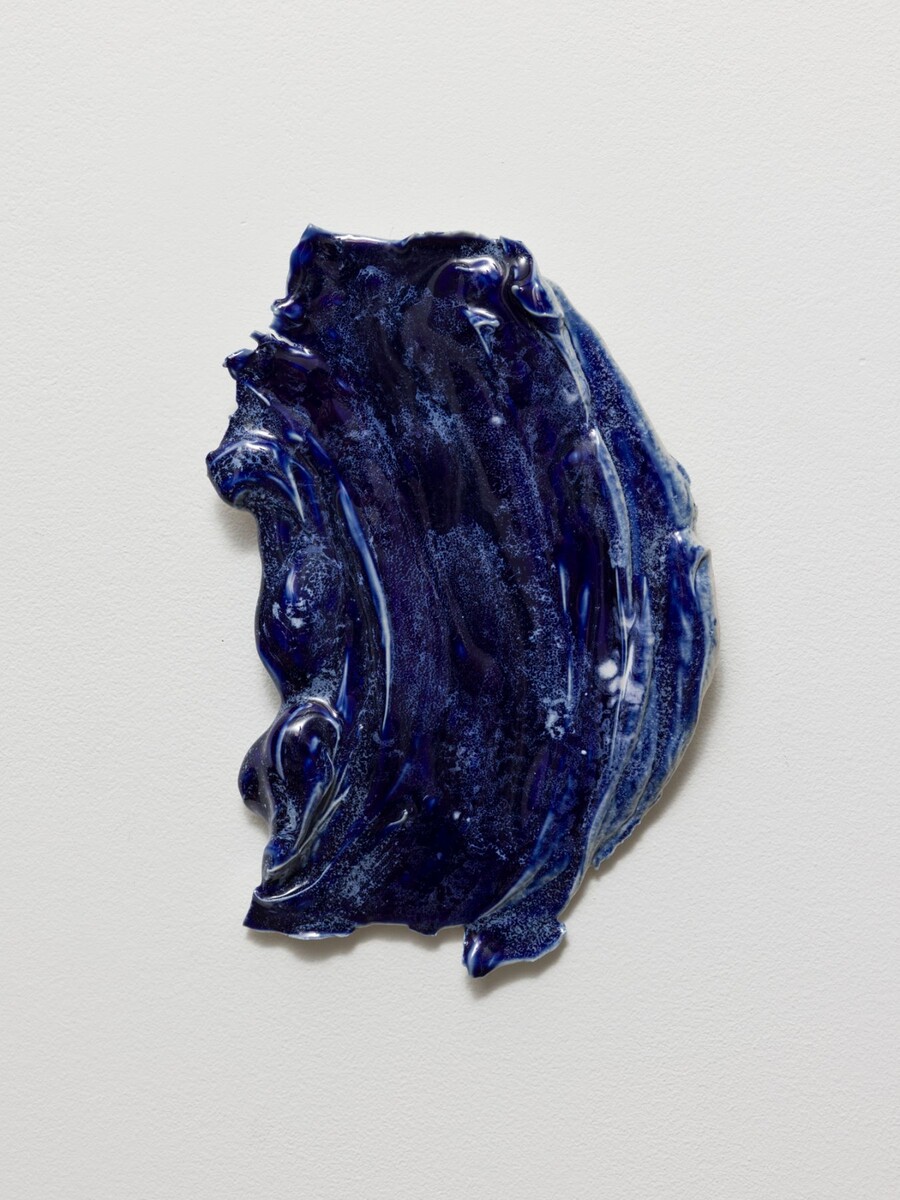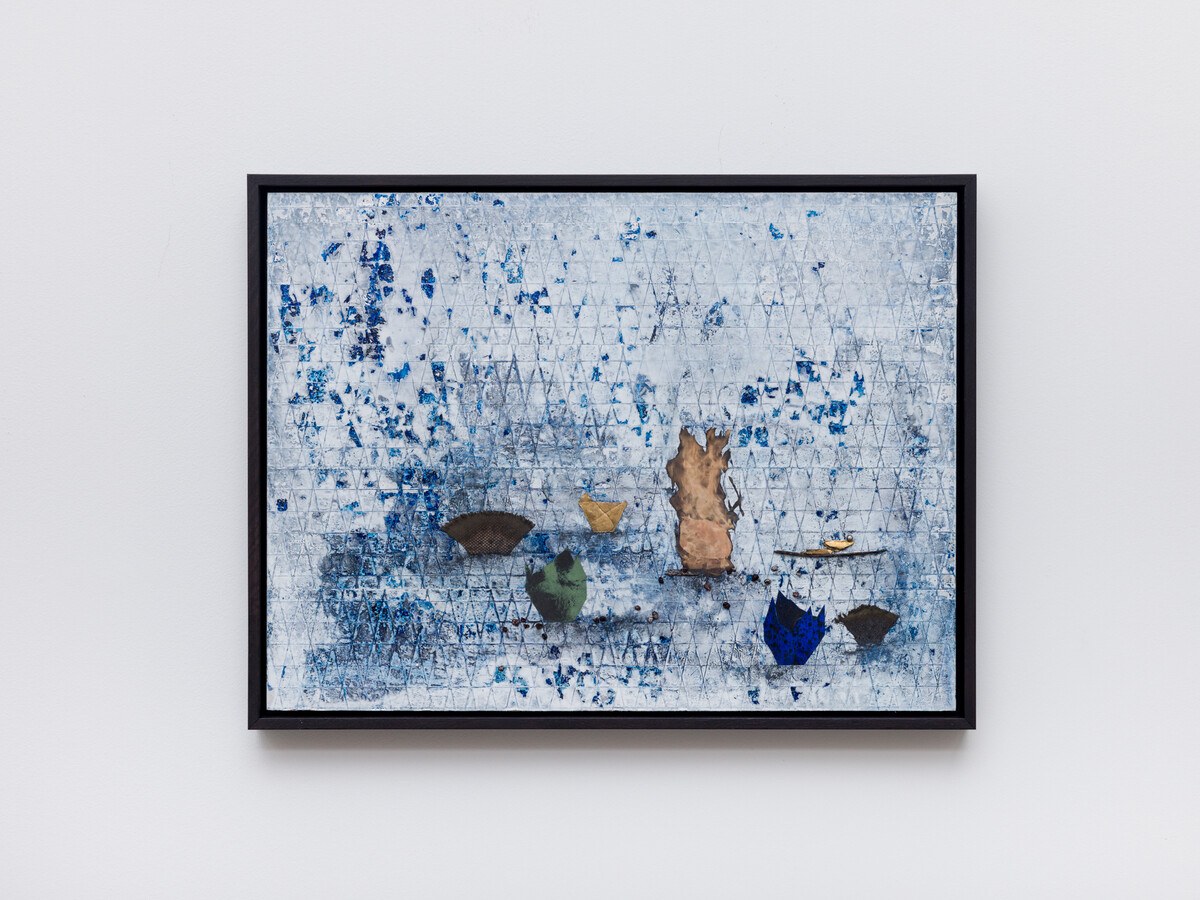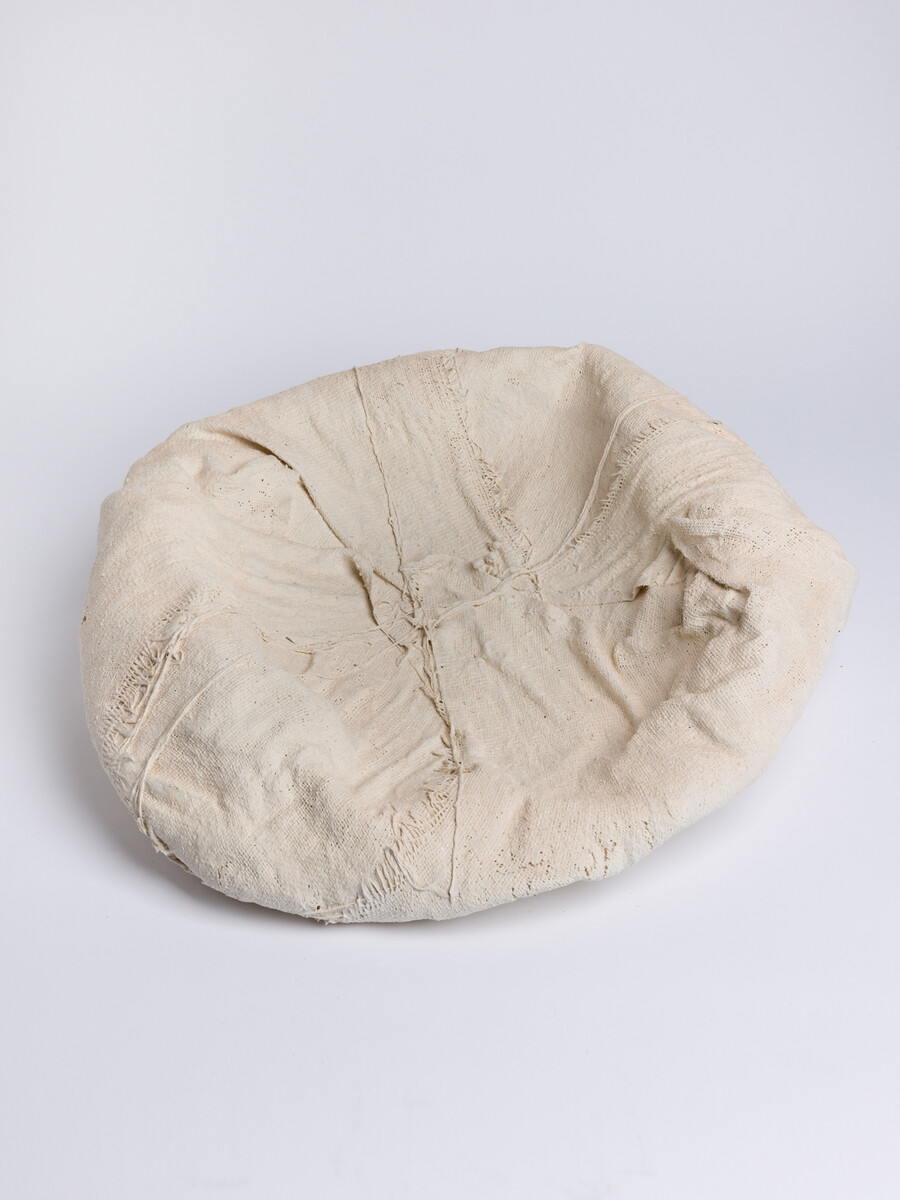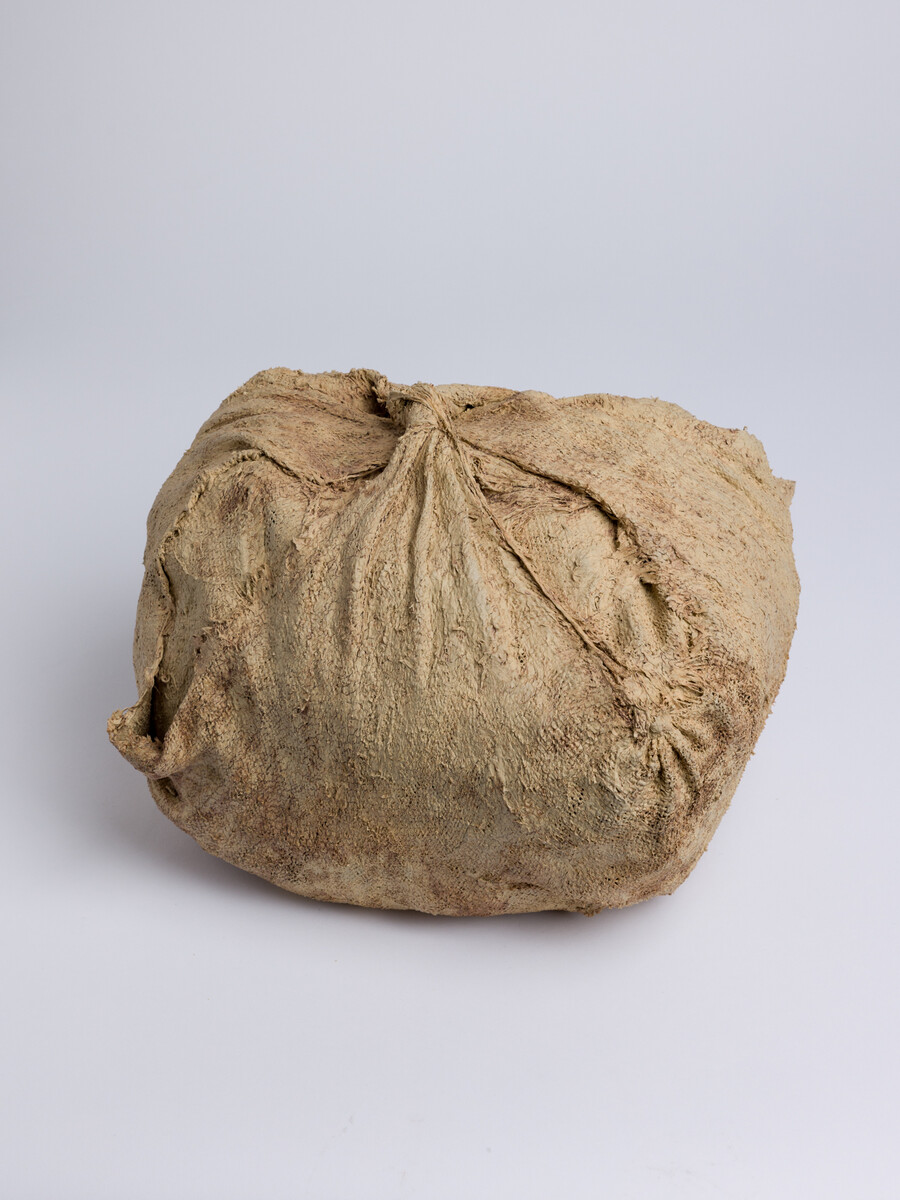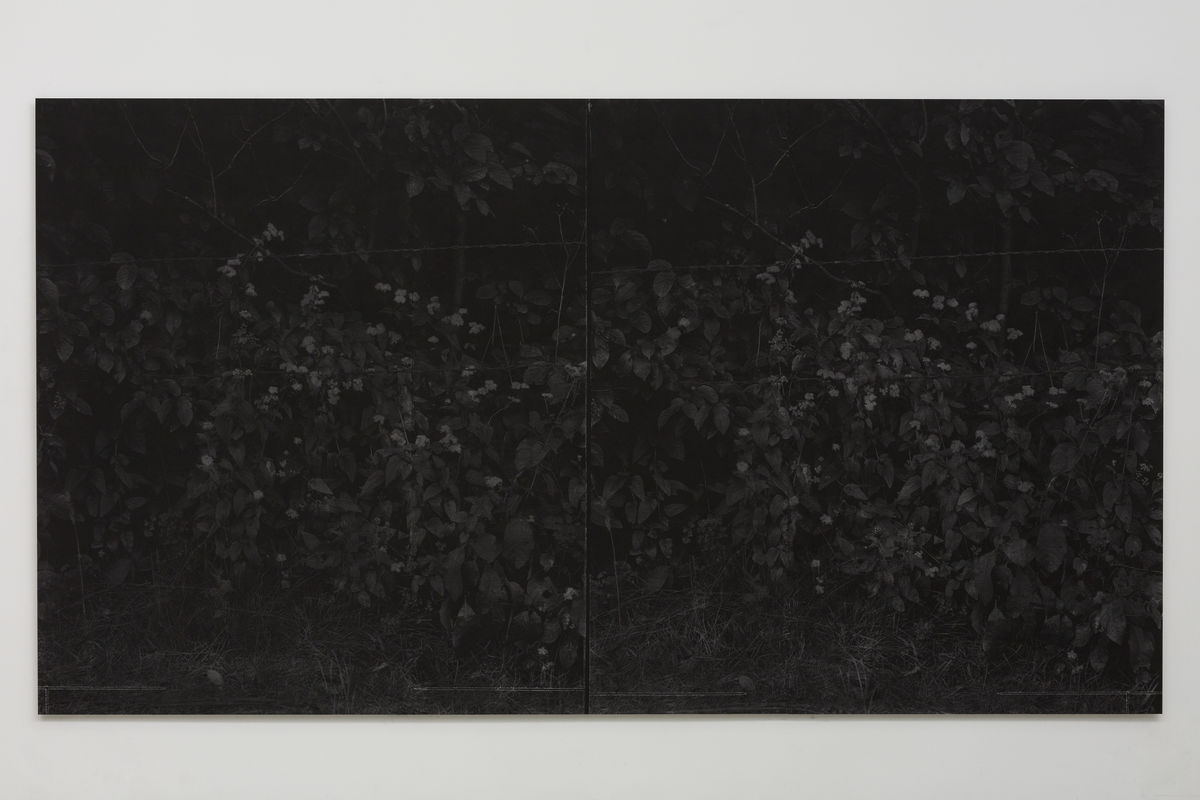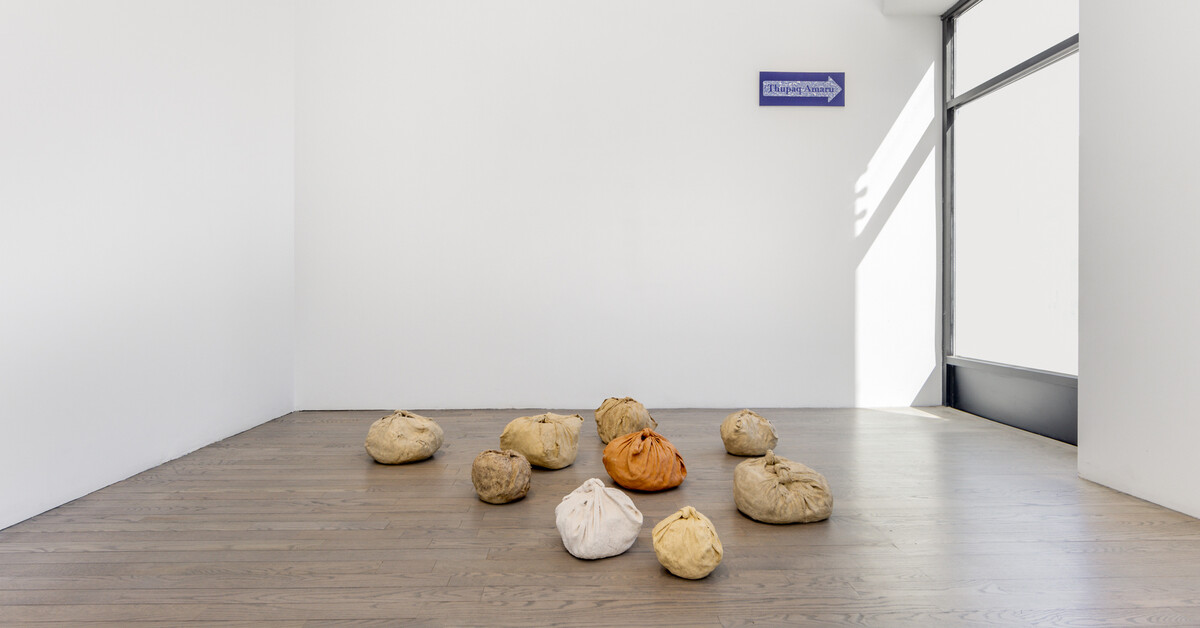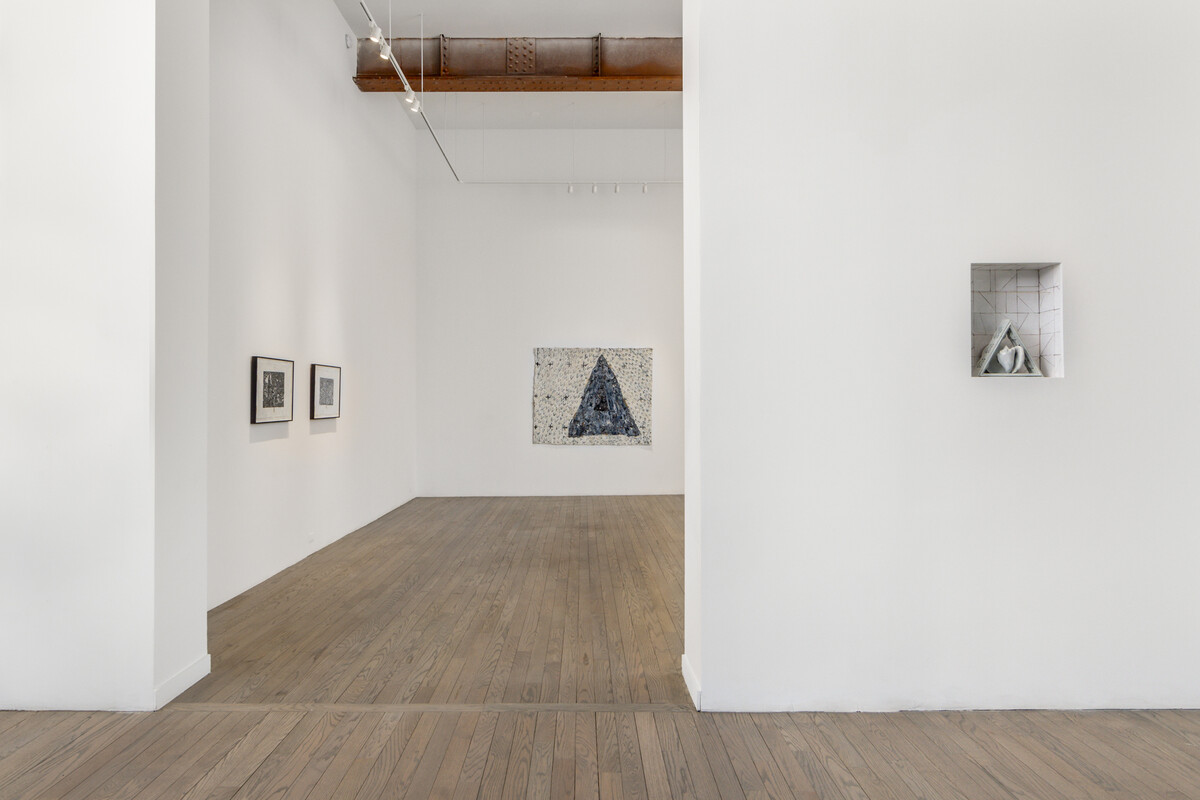
PATRON is proud to present On turning ground, a two-person exhibition marking the gallery’s second presentation with Jamal Cyrus (b.1973, Houston, TX) and third with Harold Mendez (b.1977, Chicago, IL). The exhibition, combining new bodies of work in sculpture, drawing, photography and textile, tracks the two artists’ kindred interrogations into how culture and its markers are preserved across boundaries, time, and language. Both artist’s draw upon their attunement into cultural hybridity, and how cross-hemispheric and trans-Atlantic histories of migration, create a space for communion with the past against the shifting present.
The artists’ own friendship traces over a decade to both artists’s inclusion in the group exhibition Fore (2012) at the Studio Museum, Harlem, and shared time when Mendez was a CORE Program fellow (2013-2015) and sparked a generative friendship with Houston-native Cyrus, emerging from a shared appreciation of jazz and understanding of music’s power as a form of political protest and advocacy. Together, Cyrus and Mendez’s work extends, in the words of Eduard Glissant, “a poetics that is latent, open, multilingual in intention, directly in contact with everything possible,” one that “interweaves rather than projects.”
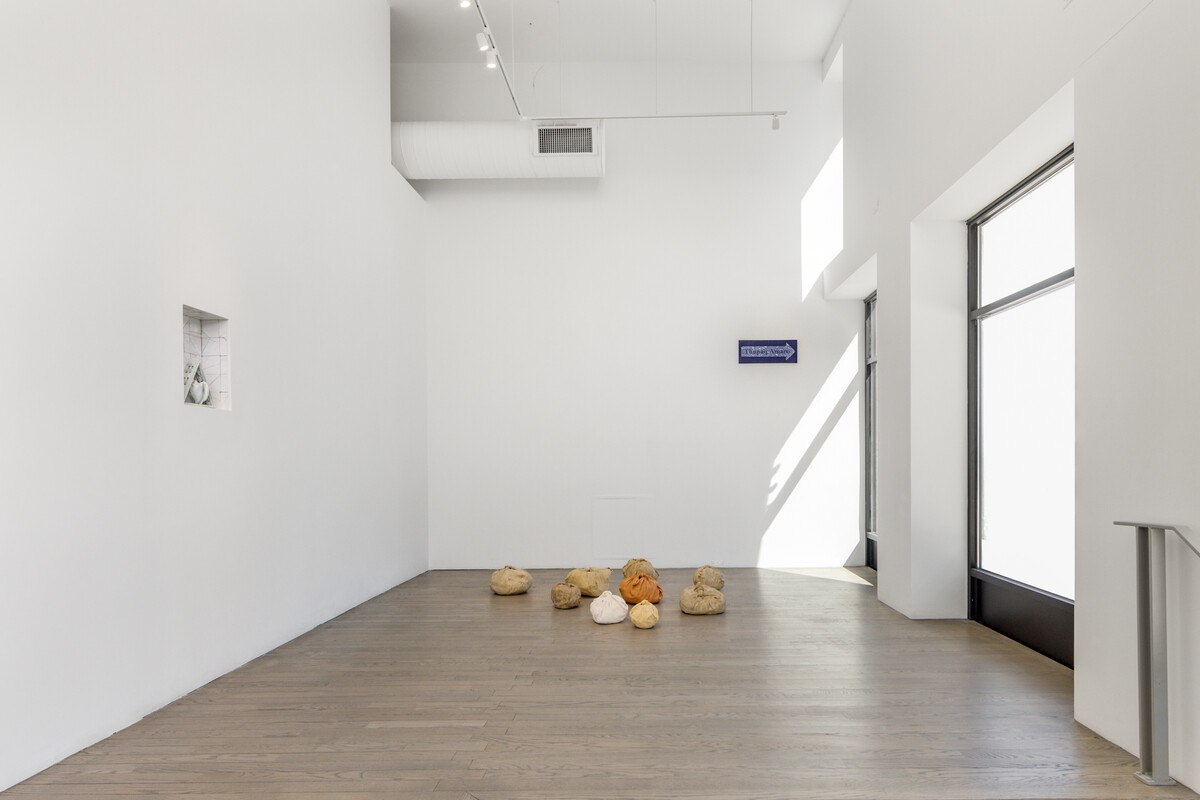
Opening up portals and suggesting pathways to the sacred, Cyrus and Mendez’s research-based practices examine the forms and patterns of ritual that are carried through ancestral histories and present borders, and manifest within the body. Cyrus’s research into the cross generational, and transnational dissemination of sound tracks a complex and indirect flow of influence, from the African continent to Europe, the Caribbean, North America, and back again, a triangular frame that holds at its core the advent of experimental jazz and American Soul–fleeting like ripples, or sound waves across his denim works. An altar to this history is Cyrus’s assemblage of percussion instruments nested within a niche of Moroccan tile. The sculpture’s descriptive name references Aretha Franklin’s single Rock Steady from the iconic 1972 studio album, Young, Gifted, and Black.
Mendez’s work for On turning ground marks a significant chapter in his practice, resulting from consecutive residencies at the Center for Contemporary Ceramics (CCC) and the John Michael Kohler Arts / Industry Residency (2023 and 2024). Experimenting with material alchemy and a myriad of firing techniques, Mendez initially explored ceramics through his raw burlap sculptures, Mundos. The bundle-like sculptures function as vessels between two worlds, continuing the remnants of symbolic materials Mendez places within them before firing. These acts of transmutation unfold and expand through the exhibition. Wall mounted vases, fired and re-fired to alchemize the glazes hold ephemeral offerings, or tributes along a path. Ain’t I Épistémè? (2024), a monumental porcelain sculpture cast from found pinecone spines rises from the shadows, embodying recombinant notes of the past. Weaving takes on an embodied presence in On turning ground. The process takes the form of cast porcelain woven tiles in Mendez’s On turning ground (Diviners) (2024). Designed from basket-weave patterned petate mats—originally found throughout Mesoamerica before and after conquest—the sculpture operates as a space for exchange, and a physical threshold between mortal and otherworldly realms.
Both Cyrus and Mendez mine the specters of history for traces of what has persisted. Contributing excerpted texts, or “tone poems” installed on the gallery’s marquee, the artists offer up fragments that suggest a treasure perhaps concealed. For Cyrus and Mendez the gallery’s architecture becomes a chamber that echoes with a chorus of reverberations, triangulating past, present and future into “a place of encounter and connivance.”
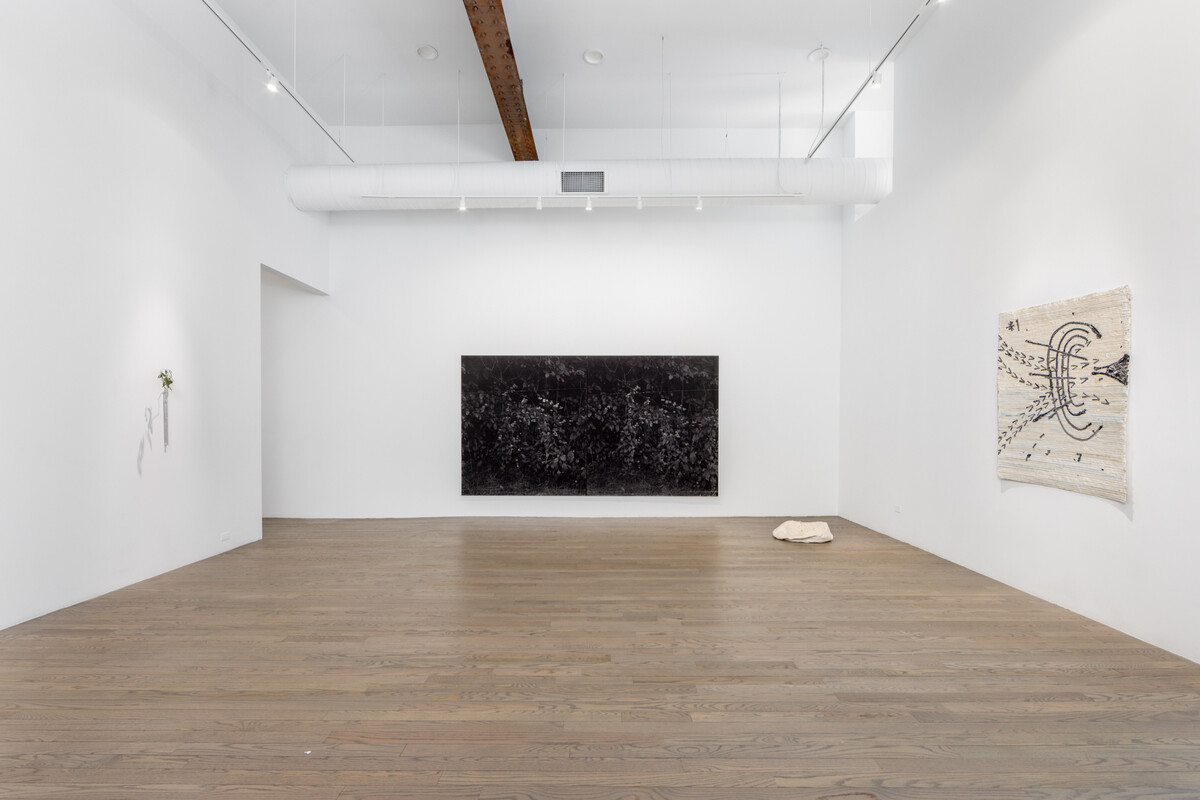

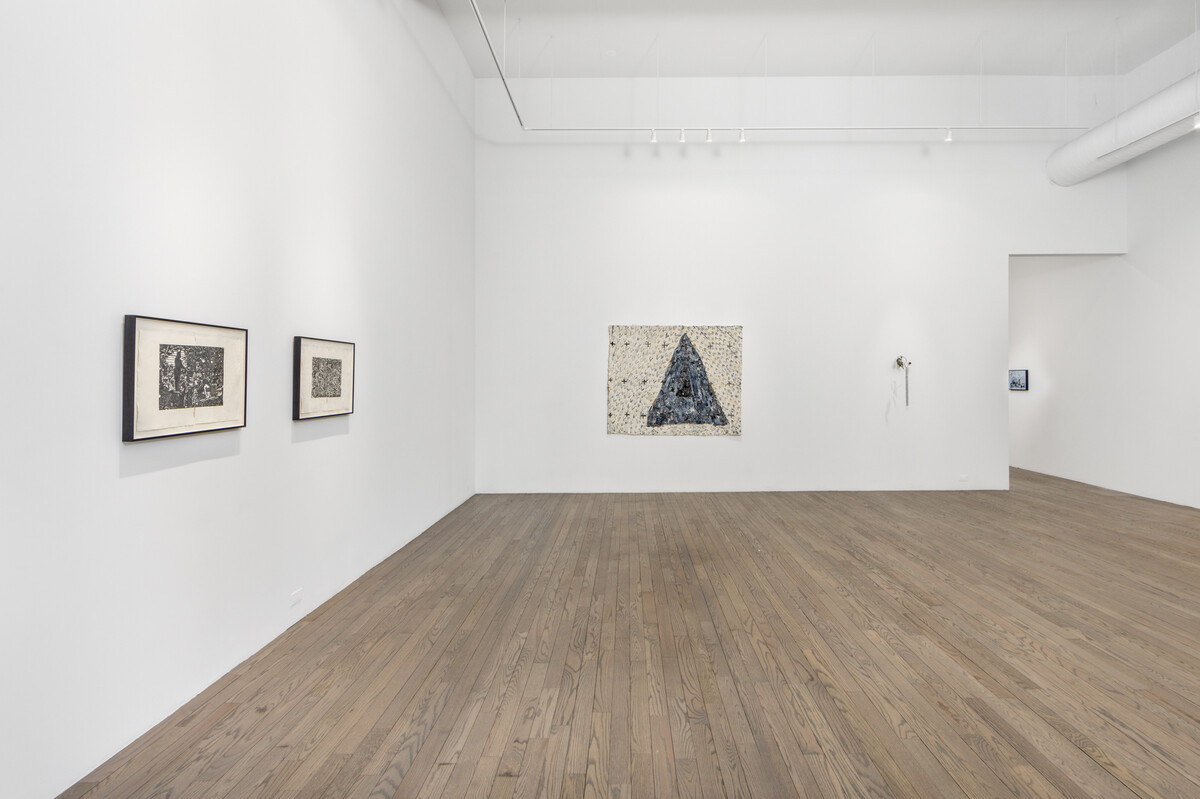
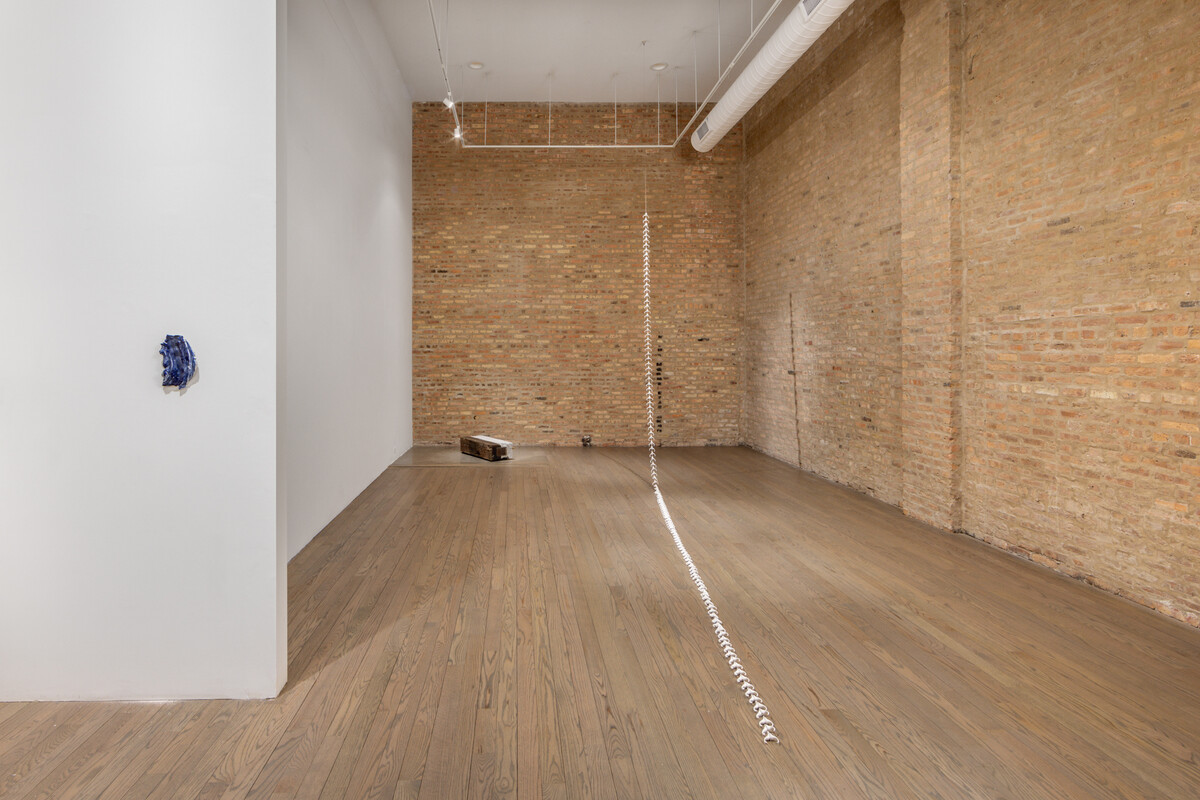
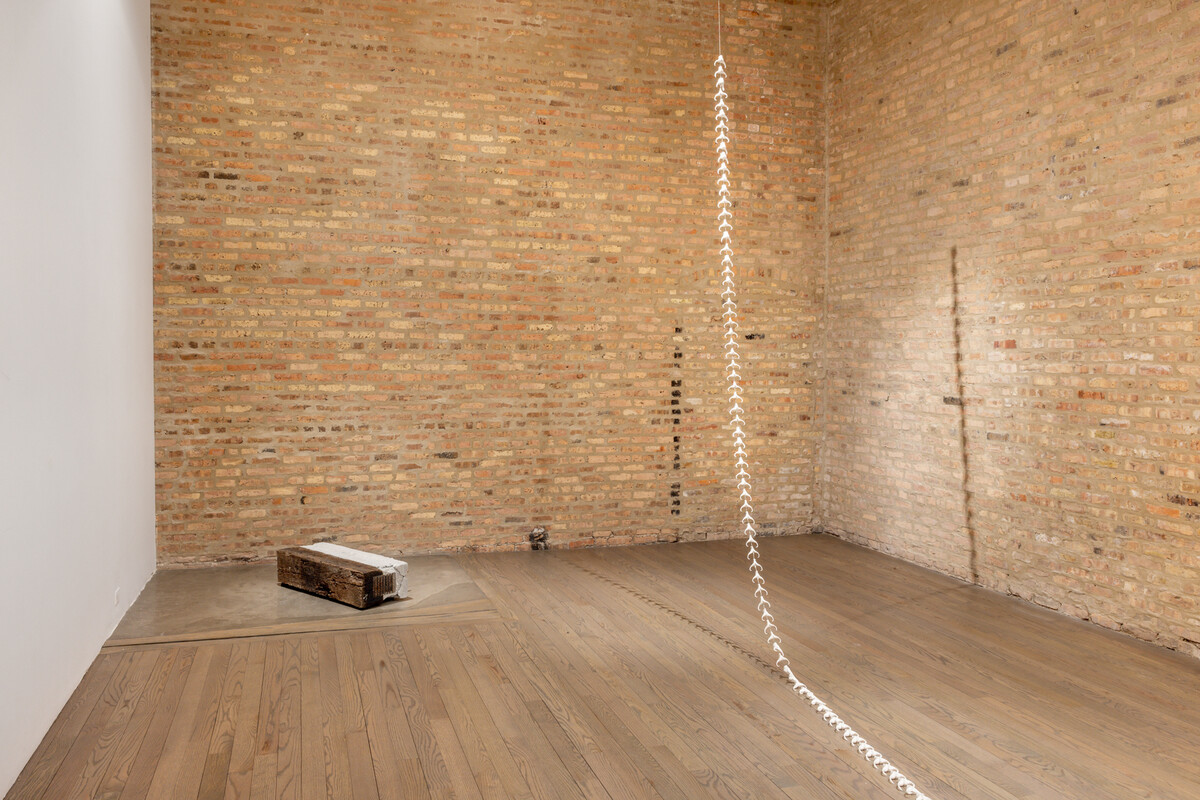
5 Must-See Gallery Shows in Chicago
Artnet News
Apr 15, 2024
Apr 15, 2024

